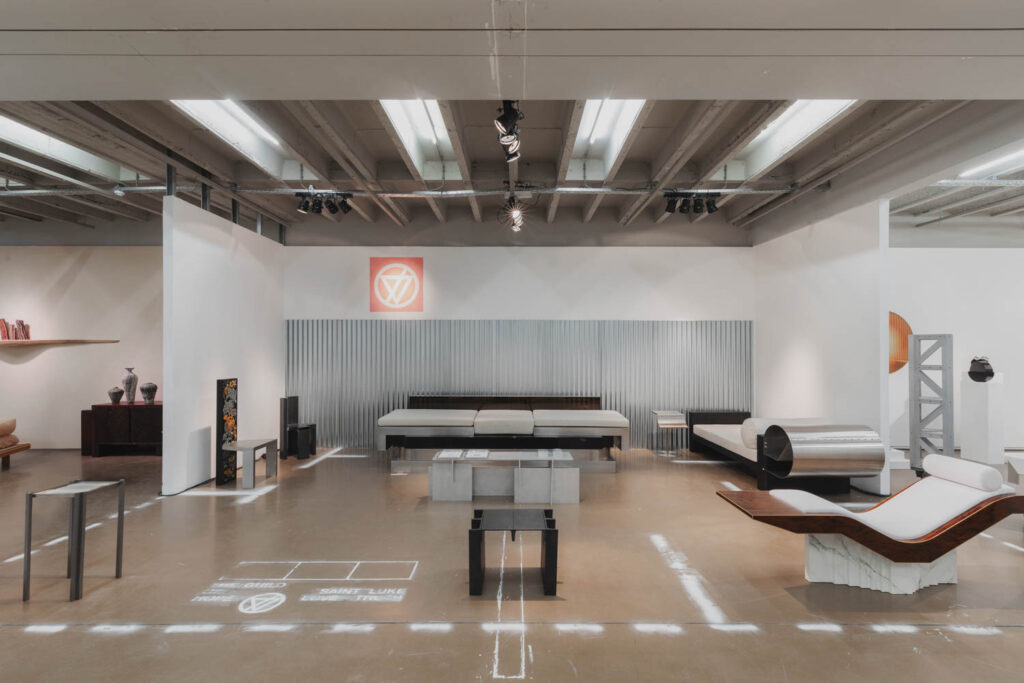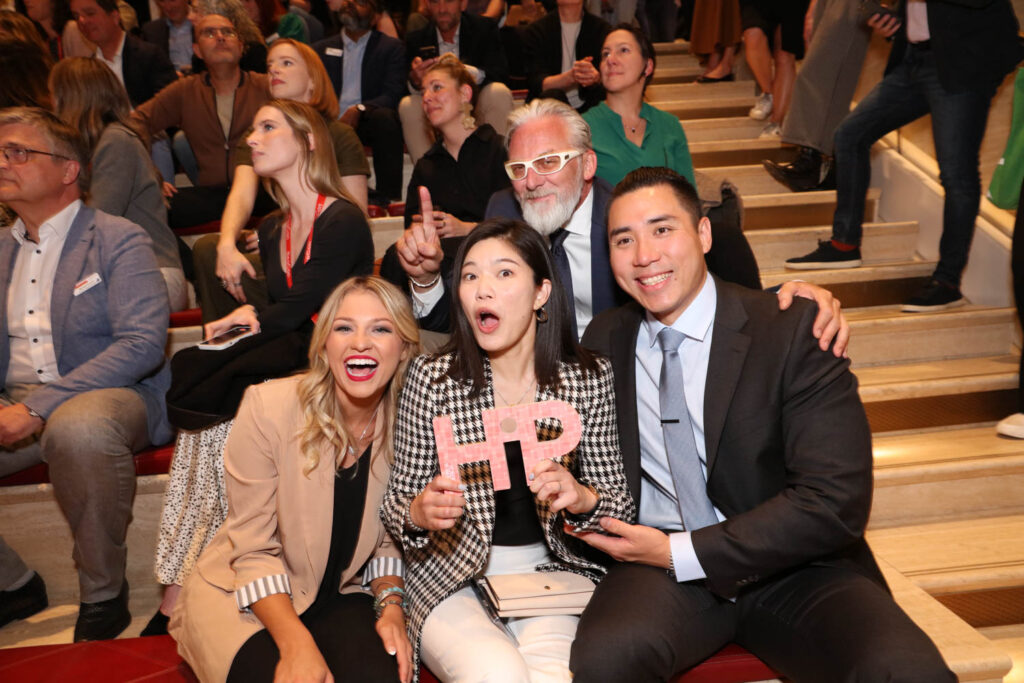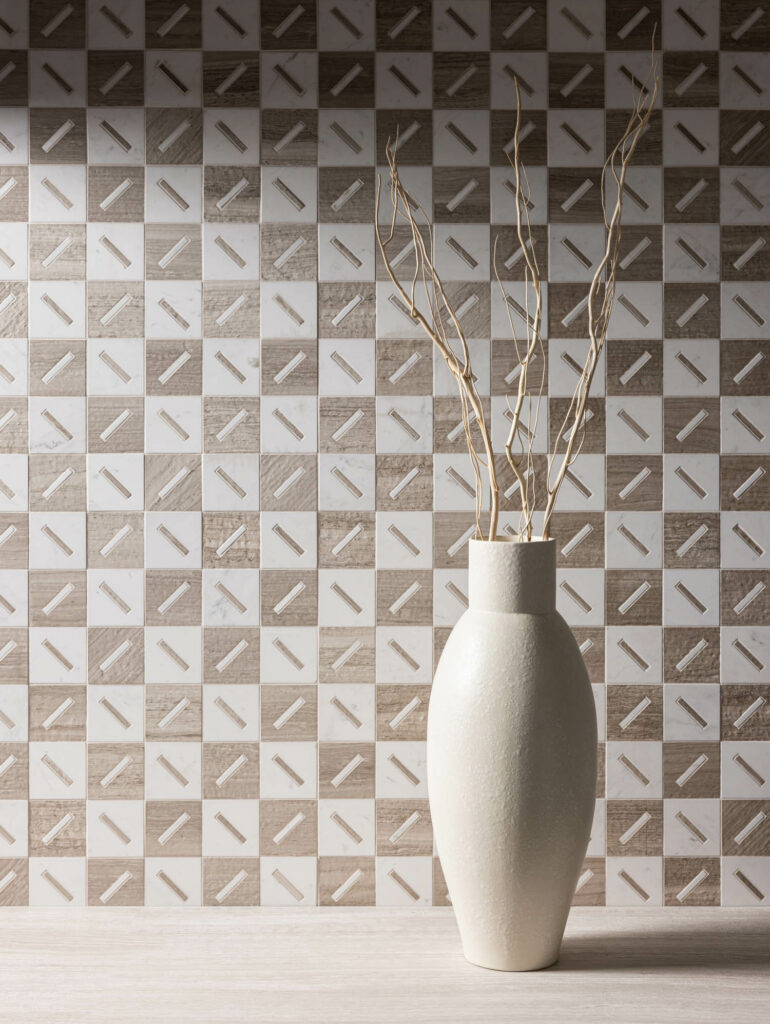
10 Questions With… Lina Alorabi
For Lina Alorabi, one of Cairo’s dazzling designers, design isn’t just about making something beautiful, it has to be impactful. That’s why, for more than a decade, the designer has joined a host of other creatives to elevate Egypt’s architectural and design scene. Alorabi works as the lead designer at Don Tanani where she’s keen on crafting stories through furniture pieces. What keeps her aloft is the deep significance in her work: Resurrecting ancient Egyptian mythology and embedding these stories in each piece through exquisite details and elaborate patterns. It’s how she created “duality,” a deeply researched collection that explores animalistic forms in ancient Egyptian text; the collection sparked a wave in Cairo, creating a new trend in the market.
In Alorabi’s furniture piece, connectivity is emphasized in face-to-face sitting structures—woody colors against neutral fabrics, symbols and linear carved structures, snake-line forms—everything seems flexible yet works together. Her latest Moruna Sofa is evidence. Created from old collections, the sofa symbolizes the cycle of life. Moruna, meaning flexibility, deconstructs past works of hers and manifests them in the form of the luxury X relaxation piece for indoor-outdoor use.
While her biggest motive is to connect people, both internationally and locally, to Egyptian roots through her designs, Alorabi says there are many expectations surrounding how and what Egyptian designers create. “Egyptian design is such a large topic. I want people to realize how big and vast and expansive Egyptian design is,” she says. “We’ve been influenced by the entire world. It’s hard to dissect what is Egyptian, what is not Egyptian… Even now, we have so many Syrian refugees, and they’re importing their culture from our culture. We’re learning from them, and they’re learning from us. I think that’s the beauty of Egypt.”

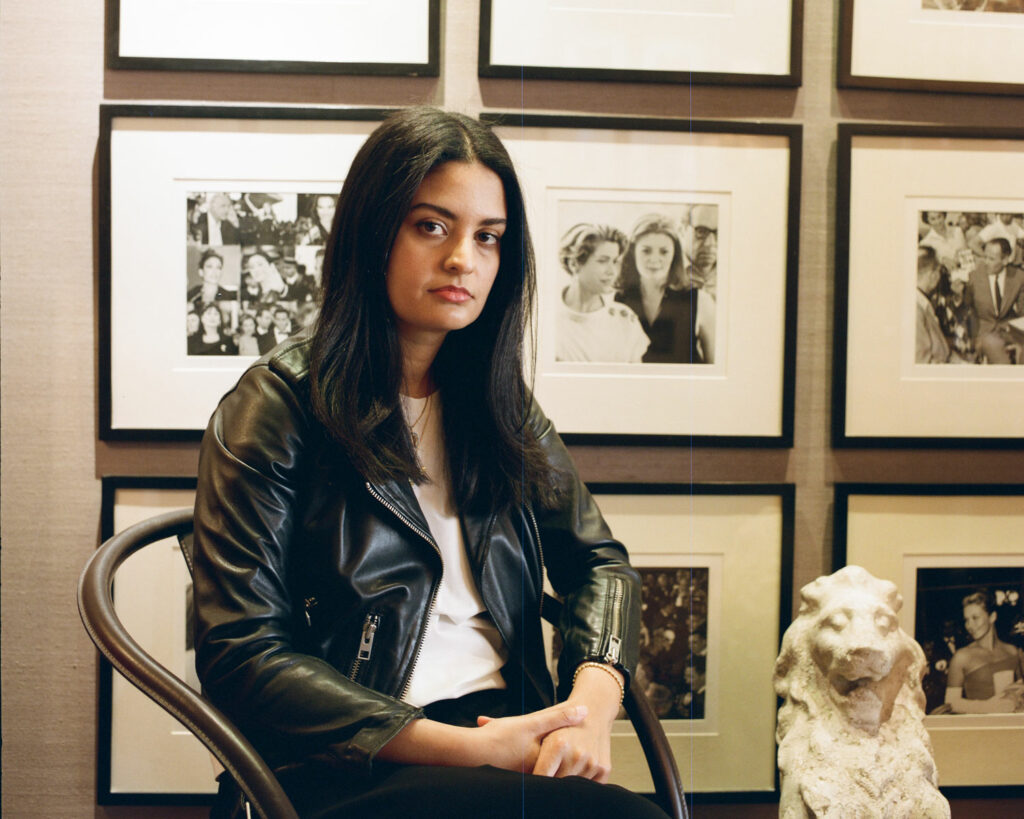
Lina Alorabi Shares Insights into Egypt’s Culture of Design, Craft Traditions, and More
Interior Design: Where does your story as a designer begin?
Lina Alorabi: My father is a retired diplomat. I spent my life hopping between so many countries, so I got interested in design because of that; I was exposed to different cultures and that nurtured me well. I studied design in England at the Kent Institute of Art and Design, and I studied furniture because, as an Egyptian, it’s one of our biggest industries. Then I worked in Berlin for a couple of years… and moved back to Egypt in late 2009. It’s been exciting working here because we’ve been going through a lot of cultural change, political change, economic change. We’re re-exploring what it means to be Egyptian in many ways.
Here, I met Alia and Tamara El Tanani, who are the founders of Don Tanani, which is the brand that I’m currently designing for. First, I was a freelance designer, and now I’m working as the lead designer of Don Tanani. I was really excited to work with them because they want to redefine Egyptian design—they knew there was a gap in the market in Egypt. They wanted to do collectible design, and they wanted it to be 100% designed and made in Egypt.

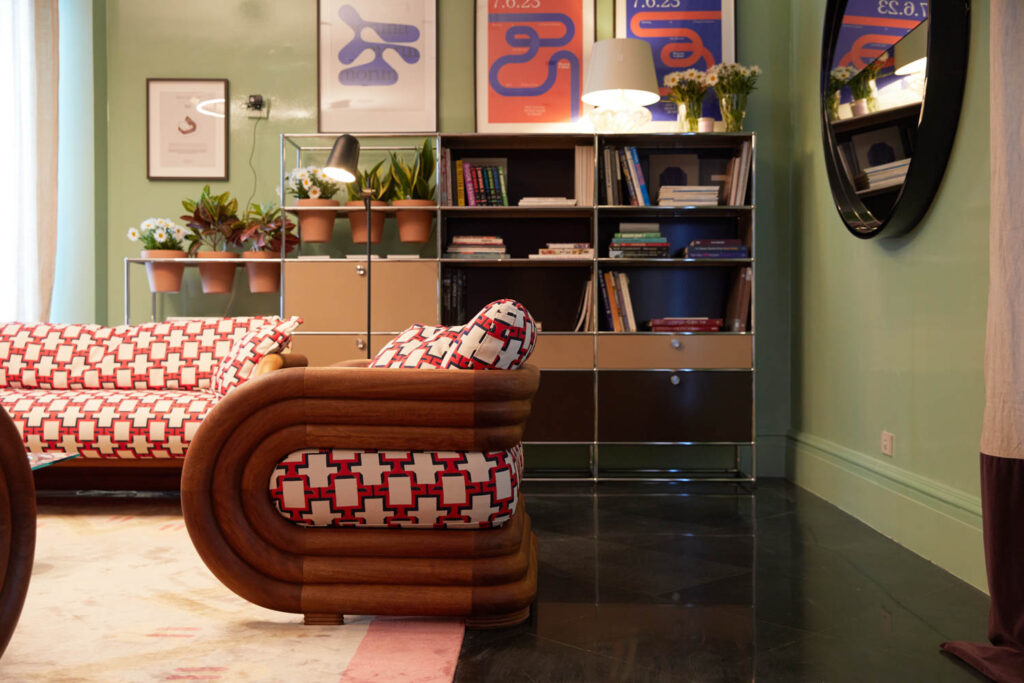
ID: Tell us about your background, what inspired you to be a designer?
LA: I originally wanted to be a car designer, and I think it relates back to travel—that’s what I would always notice, how much the environment changes around you and how it affects you. Then I had an epiphany a couple of years ago in Cairo. I went to an art exhibition about Egyptians, diaspora Egyptians, and basically [the exhibit showcased how] people will live in an apartment, and for them, the apartment that’s in Saudi Arabia or wherever is temporary, and their real home is still in Egypt. The exhibit had a whole panel discussion with people who talked about how they never felt at home. When I related my experience, even though I’ve traveled a lot, I realized that I always felt home because my mother would put the effort in to take our things with us as we travel. But I think that made me realize the importance of objects; they don’t just decorate, they affect your environment and yourself as well.
ID: How did the design scene in Egypt look when you arrived, and what is it like now in 2024?
LA: When I moved here, Egyptian design was just starting in a modern sense, where furniture manufacturers were looking for designers. Before, they weren’t doing that. Most of the furniture companies here are family businesses, and they were remnants of colonial times, mostly producing reproductions, like French English furniture, because that’s what the market wanted. We have a big city on the north coast… and all the manufacturers do reproduction furniture. We have a lot of craft traditions, but manufacturers were making products that weren’t unique, so there was no value added.
When we introduced our first collection in 2020 [of original design], I think we made a big ripple in the design scene here. Right after we released it, we started to see a lot of other people getting into functional art and collectible design. Suddenly it became the new buzzword and the new trend, and there are a lot more original designs happening. It’s a young market, it’s still developing.


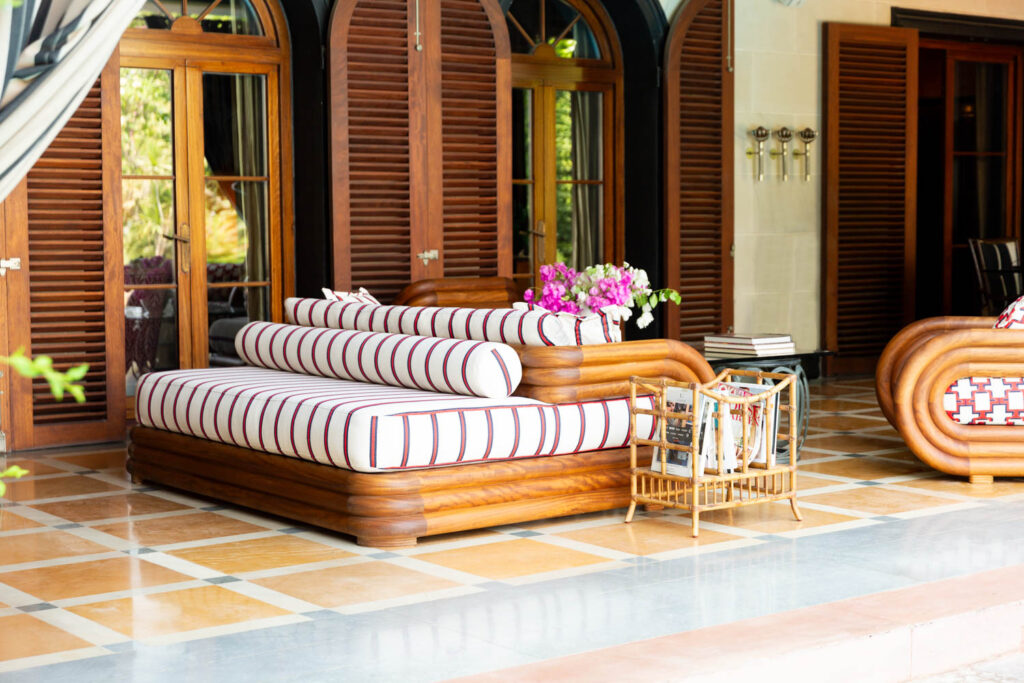
ID: Are collaborations common, and is the design scene inclusive and accommodating to creatives?
LA: What we want to do is collaborate with many designers. That’s actually our ethos. It’s not just going to be me designing. We’re focusing on Egyptian designers. We have many that are in the industry but their voices are not really heard, or they’re in a cycle of making very commercial furniture and not being able to express themselves. Generally, in Egypt, it’s all about manufacturing. A lot of big name designers come to Egypt to manufacture, but you wouldn’t know because they don’t really get credit. The more I work here, the more craft people I meet who say: “Well, I did this hotel in Paris,” or wherever. All incredible work, and if you didn’t know them personally, you wouldn’t know.
ID: Your designs have a fluid look of wavy lines; how did you come up with this design concept?
LA: For Duality, it’s based on ancient Egyptian design. I did a lot of research and tried to understand why ancient Egyptian art looks the way it does; it has very recognizable elements. When you see it, nobody has to tell you it’s Egyptian. One of the things that struck me in Duality, in that particular collection, was that in ancient Egypt, their mythology was basically describing man’s power over nature. When you see a statue of pharaoh, that actually is the pharaoh and the pharaoh is there to protect you. That’s why the lines look like that, why everything is very monumental. When you look at the face of a pharaoh, you can see his skin. You feel like it’s actually the embodiment of their soul. That’s what I was trying to do with Duality.
I want to make sure each object had a presence or a soul; it’s not just a table that you put in a room. When the table is with you, you can feel its presence, like it’s going to move or it has a voice. That’s how I feel about design. It’s not just about making a beautiful object, it has to impart something on the space or impart something on whoever’s experiencing it.

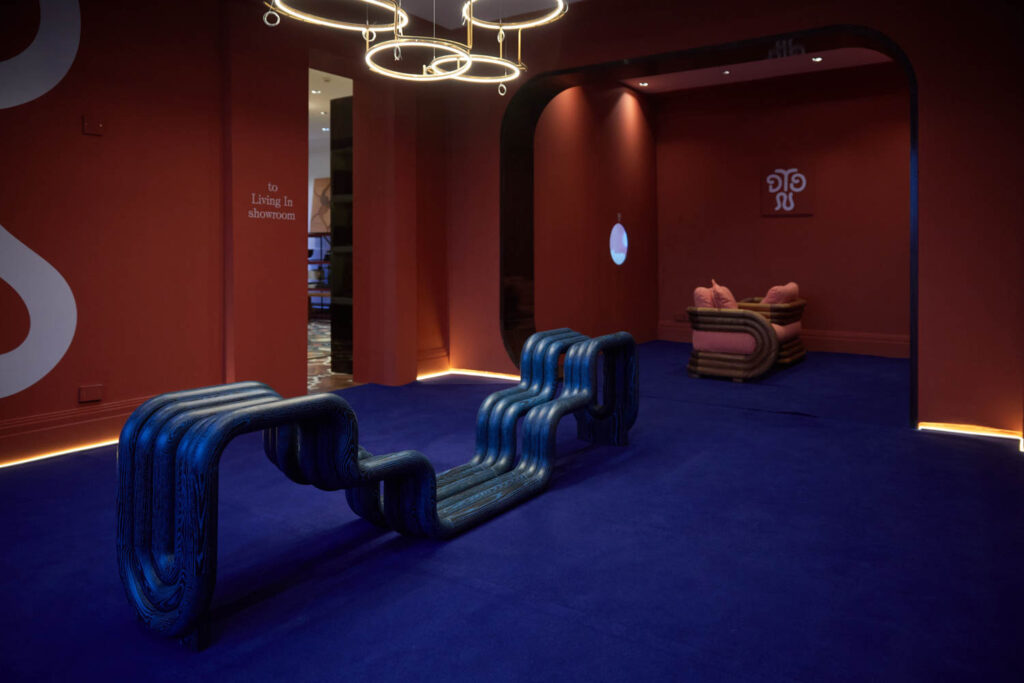
ID: Do you think there is a wide appreciation of the designs made in Egypt by locals?
LA: I think we underestimate our capabilities, which is part of colonialism and industrialization. Usually, when you go to Europe and something is handmade, that means it’s better than machine-made. In Egypt, we have a weird opinion that machine-made should be better than handmade. It relates to the fact that we have so many craftsmen that it’s really easy for us to access that and it’s harder for us to access [machines]. It’s cheaper to make a piece of furniture here in Egypt than to import one so I think that’s what plays with people’s minds because the cost of something from Germany or elsewhere is so much higher and the cost of something in Egypt is so much lower, [so the thinking is that] it must be not as good. And we tend to think anything western is “better.”
ID: When you create each piece, are you intentional about connecting people with their ancestral roots?
LA: Yeah. What makes me sad is that when people internationally think of Egypt, they just think of the pyramids, and ancient Egypt, in a very touristic sense. What I think of Egypt now—Egyptian art and Egyptian design—I don’t think people know about. So it’s very important for me that my work says that, because I feel like we’re giving a voice to our culture and our identity.
ID: What materials do you work with in the production of the furniture?
LA: Don Tanani actually has its own wood factory. We import wood, but Egypt also has a very long history of importing wood. We’ve always been very good importers of raw materials since ancient times. One unique material we use is camel bone. We have a table which has bone inlays. Here we have camels that die for whatever reason and they take the bone and cut it according to the size that we need; you’re not using the whole bone, just layers. It’s very versatile.
We’re working with ceramics right now for a new project. We also use brass. But mostly we use wood. What we try to do with the wood is have really unique joinery, unique finishes. We develop finishes, as well, so we oxidize the wood or we leave it plain. We fill the grain with gold, as well. We use a lot of gold leaf. That’s very Egyptian.



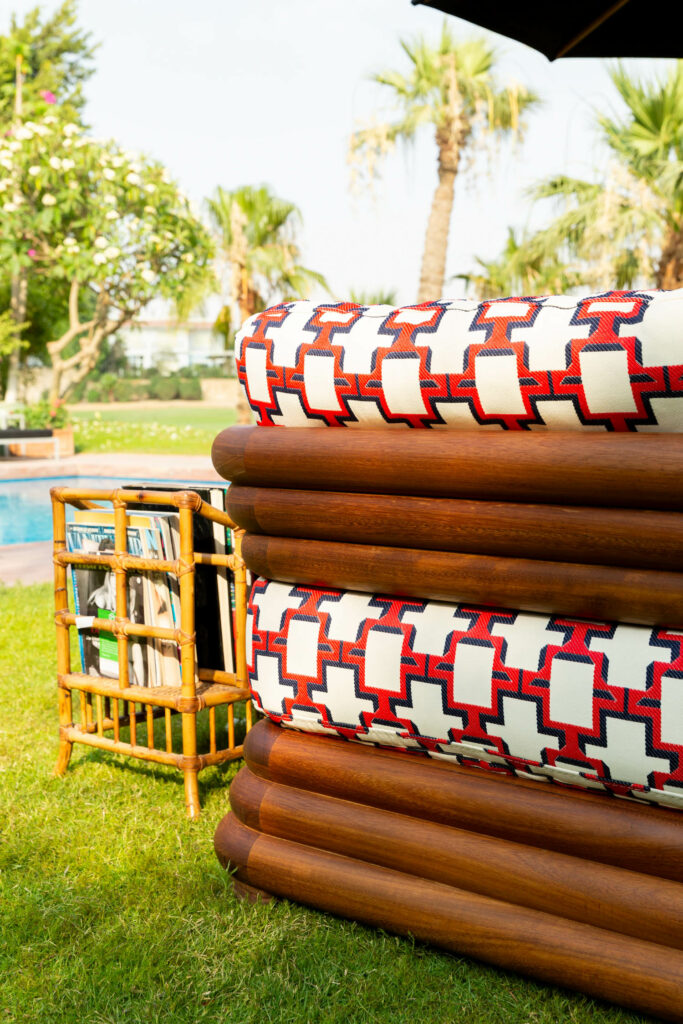
ID: What look does craftsmanship take in the Egyptian design scene?
LA: Well, like I was saying, we have a really high level of craftsmanship in many areas. So we have woodworking, wood carving, like, the same wood joinery. We have a lot of specialists, brass carving, brass etching, and we have glass blowing. We have so many craftspeople and craft areas, but they’re really underutilized. A lot of them are geared toward more commercial work.
Now you do see people doing more craft or unique design work, but a lot of times, they’re not really credited. I think if they were accredited, there would be much more advancement here. So that’s one thing. And in general, we have such a wealth of craft because we are Egyptians. We’re obsessed with making and building and doing things. And we’ve always been one of the main hubs for exquisite craftsmanship through history. To the point, even now, we’re exporting craftspeople. Right now in Europe, you can’t find master woodworkers or carvers, so they’ll leave Egypt and go work there. We have a huge wealth [of skilled craftspeople] that we’re taking for granted, and we really need to take care of them.
ID: You exhibited last year at Dubai Design Week, what was that like?
LA: It was my first time in Dubai. I’d never been to Dubai Design Week, and I was really impressed by the level of design awareness in general in Dubai. I was amazed. The appreciation and understanding of what design is is very high there. I feel like our designs really bring people: They want to come, they want to touch it, they want to sit on it. You know what I mean? It’s a full experience. They don’t just walk by and say, yeah, it’s attractive. And people were really interested in the story and the fact that it’s from Egypt and that it’s all handmade. It was an amazing experience for us; it really solidified that we’re doing the right thing.
read more
DesignWire
6 Design Highlights From Collectible Brussels 2024
From whimsical outdoor pieces to chromatic bronze furniture made of tiny finger-like bits, here are six highlights from Collectible Brussels 2024.
DesignWire
Are You Interior Design’s Next HiP Awards Winner? Submit Today
Submissions are open for Interior Design’s 11th annual HiP Awards, honoring product innovation and impactful creatives throughout the design industry.
DesignWire
Top Product Picks from the 2024 Kitchen & Bath Industry Show
Check out the sizzling, must-see products that have graced the show floor of NKBA’s KBIS 2024, from Barbie pink faucets to sleek gas cooktop ranges.

